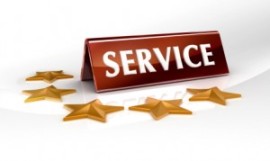The answer to this question could be easy or complex. There are varying degrees of “tolerance” for every client and what could be a deal breaker for one person, may not be for another. Personally, I know that there are some things that are deal breakers right from the get-go. We have all had incidents of varying degrees in an array of businesses — issues that are out of the owner’s control and those for which they are responsible. We tend have more tolerance for issues that are out of the owner’s control, however, those that “are” in their control are the deal breakers. 
Let’s run down the list of why a customer would not return to your business:
- Rude front desk staff
- Lack of information to make a decision
- Forceful or pushy sales team
- Lack of professionalism from staff
- Uninspiring facility and decor
- Dirty and unclean facility
- Unwelcoming facility and waiting areas
- Treatment rooms needed a facelift
- Outdated technology
- Lack of marketing materials
- Poor social media profile, such as website or Facebook accounts
- Tarnished online profile
- Staff that comes across as too “sales-like” and not personal enough
- Difficulty to reach your business — location and parking issues
- Cost: is your pricing competitive with those in your marketplace?
- Poor product return and exchange policy
- Poor customer service
These are just a small sample of things that can drive a client away. The biggest issue is that when someone has a bad experience they tell at least 10 people, but if they have a good experience they share it to only half of that.
So how can you ensure that your clients return? There are a number of ways, but first you need to know why they didn’t return. Reaching out to your clients post-treatment within 24 hours is a great way to get feedback and develop a relationship. A 2011 American Express survey showed that 90% of customers prefer to resolve service issues by phone. People tend not to like confrontation, therefore they would be more apt to talk on the phone than in person at your front desk. Show your customers appreciation when they are in your facility and look at the above list, making sure that you are not in violation of any items. If so it may be time for some retraining.
Customers are the “face” of your business — treat them with the courtesy and consideration they deserve .
Filed under: General, General Business, Strategy | Tagged: customer service, Why clients dont return | Leave a comment »







